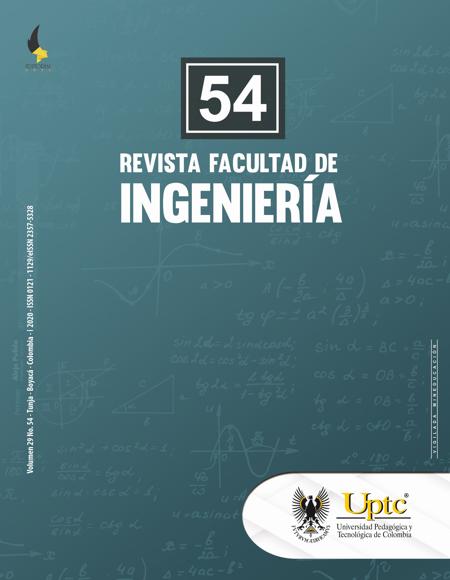Induction Generator Characterization for a Medium and Low Wind- Power Generator

Abstract
The following paper was part of the research work of the GEOM Seed Plant, which develops medium and low power wind generators. The aim was to develop proposals of prototypes that contribute with innovation and research to the development of non-conventional renewable energies. We studied the behavior of an electric induction generator in order to implement it in a low and medium power wind generator, the study was characterized by using two points of view: theoretical machine analysis and virtual implementation with software-level technological tools such as Simulink. The resulting model meets the climatological conditions of the city of Bogotá, where there are ideal conditions for the exploitation of wind energy, taking the concept of total available power as reference for the analysis of the generator. The electrical and application advantages and disadvantages were analyzed. Finally, it was determined, based on the analysis processes, that the use of an induction machine is more convenient compared to a synchronous one, in order to perform future implementations that are optimal and efficient and support the study and development process of non-conventional renewable energies, particularly wind energy.
Keywords
asynchronous, generator, induction, power, renewable energy, wind turbine
References
[1] J. E. Castro-Montaña, and A. P. Gallego-Torres, "La educación energética una prioridad para el milenio," Revista Científica, vol. 1 (21), pp. 97-110, 2015. https://doi.org/10.14483/udistrital.jour.rc.2015.21.a11
[2] D. E. Albadan Molano, and J. E. Salamanca Céspedes, "Diseño de hélices eólicas para aerogenerador de eje horizontal: modelo 3D," Visión electrónica, vol. 13 (1), pp. 135-143, 2019. https://doi.org/10.14483/22484728.14400
[3] W. Vásquez, and J. Játiva, "Modelación, simulación y control de aerogeneradores con generador de inducción doblemente alimentado utilizando Matlab," Revista Técnica Energía, vol. 11, pp. 143-152, 2015. https://doi.org/10.37116/revistaenergia.v11.n1.2015.82
[4] R. S. Mena, "Aerogeneradores con sistemas de almacenamiento de energía-wind power generation with energy storage systems," Doctoral Thesis, Universidad de Cadiz, Cadiz, Spain, 2016.
[5] I. Kosow, Máquinas eléctricas y transformadores, United States, New York: Pearson Educación, 1993.
[6] F. Eraso Checa, and E. Escobar Rosero, "Metodología para la determinación de características del viento y evaluación del potencial de energía eólica en Túquerres-Nariño," Revista Científica, vol. 1 (31), pp. 19-31, 2018. https://doi.org/10.14483/23448350.12304
[7] S. Chapman, Máquinas eléctricas, Mexico, Mexico City: McGraw-Hill, 2000.
[8] P. Tipler, and G. Mosca, Física para la ciencia y la tecnología. Spain, Barcelona: Reverte, 2010.
[9] J. M. Villalba, L. Ferreira, E. Arribas, A. Nájera, and A. Beléndez, "Estudio experimental de la inducción electromagnética entre dos bobinas: Dependencia con la corriente eléctrica," Revista Brasileira de Ensino de Física, vol. 1 (37), pp. 1313-1317, 2015.
[10] G. Bernal, M. Rosero, M. Cadena, J. Montealegre, and F. Sanabria, "Estudio de la Caracterización Climática de Bogotá y cuenca alta del Río Tunjuelo," Colombia, Bogotá: Instituto de Hidrología, Meteorología y Estudios Ambientales IDEAM-Fondo de Prevención y Atención de Emergencias FOPAE, 2007.
[11] D. Albadan-Molano, J. Salamanca, and A. Gallego-Torres, "Diseño de hélices horizonales para eje horizontal," Revista Facultad de Ingeniería, vol. 27 (47), pp. 129-136, 2018. https://doi.org/10.19053/01211129.v27.n47.2018.7929
[12] J. Sánchez, and O. Hernández, Análisis mecánico de una máquina de inducción con rotor jaula de ardilla empleando modelo digital, Mexico, Mexico City: Instituto Politécnico Nacional, 2012.
[13] E. Torres Montalvo, Control de voltaje del generación de inducción auto-excitado para aplicaciones de micro/mini generación de energía eléctrica, Mexico, Guadalajara, 2006.
[14] Mathworks, Mathworks Physsics Model. https://la.mathworks.com/help/physmod/sps/powersys/ref/windturbineinductiongeneratorphasortype.html